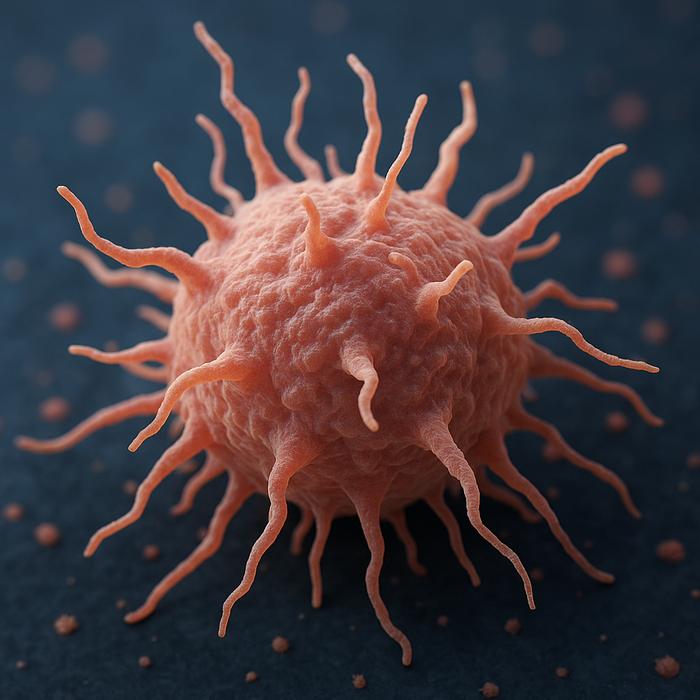Fighting off pathogens is a tour de force that must happen with speed and precision. A team of researchers at CeMM Research Center for Molecular Medicine of the Austrian Academy of Sciences, and at Medical University of Vienna (MedUni Vienna) has investigated how macrophages master this challenge.
Led by Christoph Bock, PhD, CeMM principal investigator and professor at MedUni Vienna, and Matthias Farlik, PhD, principal investigator at the MedUni Vienna, the researchers’ newly reported study offers a time-resolved analysis of the molecular processes that unfold when macrophages encounter various pathogens and infection-linked stimuli. To achieve this, the team developed a new method in mice that combines CRISPR gene editing and machine learning, and which identified key regulators of macrophage responses to the six different stimuli, including infectious pathogens, pathogen-derived stimuli, and pro-inflammatory cytokines.
“This study combined epigenome and transcriptome time series profiling with high-content CRISPR screening and integrative computational analysis in order to dissect the pathogen response in murine macrophages,” the team wrote in their paper in Cell Systems, which is titled “Integrated time-series analysis and high-content CRISPR screening delineate the dynamics of macrophage immune regulation.” They further concluded, “To our knowledge, this is the first study that combines epigenome/transcriptome time-series profiling with high-content CRISPR screening, demonstrated here for the dissection of gene regulation in mouse macrophages.”
“Innate immunity is critical for protecting the body against pathogens,” the authors wrote. “Macrophages are among the first immune cells to respond to invading pathogens, which they sense via pattern recognition receptors.”
Macrophages are also messengers, releasing various signals to recruit other immune cells, triggering inflammation, and presenting digested fragments of pathogens on their surface, guiding the adaptive immune system to develop long-term immunity. Macrophages encountering a pathogen are under immense pressure. If they react too late or not decisively enough, an infection may become fatal. But an overshooting immune response is equally damaging. Within a very short time, a tailored immune response must be initiated, including cascades of biochemical reactions triggered, thousands of genes activated, and an arsenal of substances produced—each response tailored to the specific pathogen encountered.
The authors further explained in their paper, “Detection of pathogen-associated molecular patterns (PAMPs) activates signaling cascades and transcriptional regulators such as NF-κB, IRF, and AP-1. These regulatory proteins orchestrate expression of their target genes over the course of the pathogen response and during the subsequent return to homeostasis.”
To understand how macrophages coordinate this multitude of tasks, Bock, Farlik and colleagues exposed murine macrophages to various immune stimuli that mimic bacterial or viral infections. They tracked the changes inside the cells by measuring gene activity and DNA accessibility every few hours, establishing a molecular timeline of how the regulatory programs unfold step by step.
Next, the team identified regulatory proteins that orchestrate these programs, using CRISPR genome editing to produce hundreds of gene knockouts, and single-cell RNA sequencing to characterize the genetically perturbed cells. “We investigated six immune stimuli (Listeria, LCMV, Candida, LPS, IFN-β, and IFN-γ) over a dense multiomics time course and performed high-throughput functional dissection of the macrophage response to Listeria using a combined CROP-seq and CITE-seq method,” they wrote.
This innovative method uncovered a network of several dozen regulators that share the responsibility of triggering the most appropriate immune response. The identified regulators include many that would be expected, such as the JAK-STAT signaling pathway, but also identified splicing factors and chromatin regulators that may have far less well understood roles in immune regulation. “We identified new roles of transcription regulators such as Spi1/PU.1 and JAK-STAT pathway members in immune cell homeostasis and response to pathogens,” the investigators commented. “Macrophage activity was modulated by splicing proteins SFPQ and SF3B1, histone acetyltransferase EP300, cohesin subunit SMC1A, and mediator complex proteins MED8 and MED14.”
Senior author Bock said, “It is impressive how much complexity there is in this ancient part of our immune system, which we share with sponges, jellyfish, and corals. Thanks to the advances in CRISPR screening technology, we can systematically study the underlying regulatory programs.”
In their paper the team stated in summary, “…this study establishes a time-resolved regulatory map of pathogen response in macrophages, and it describes a broadly applicable method for dissecting immune-regulatory programs through integrative time-series analysis and high-content CRISPR screening.”
